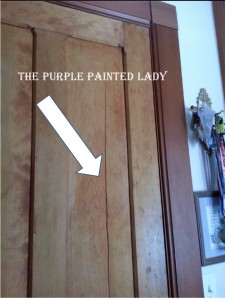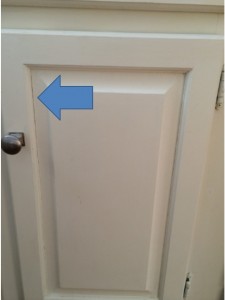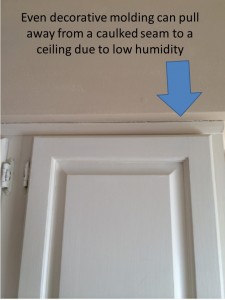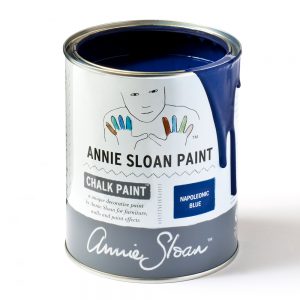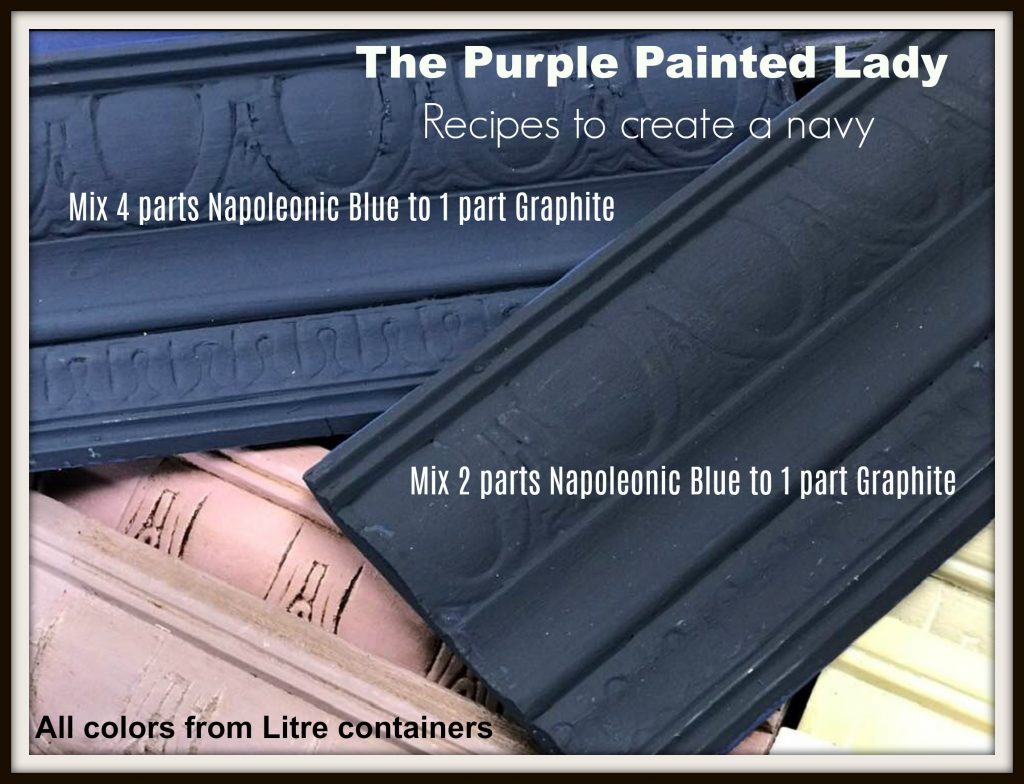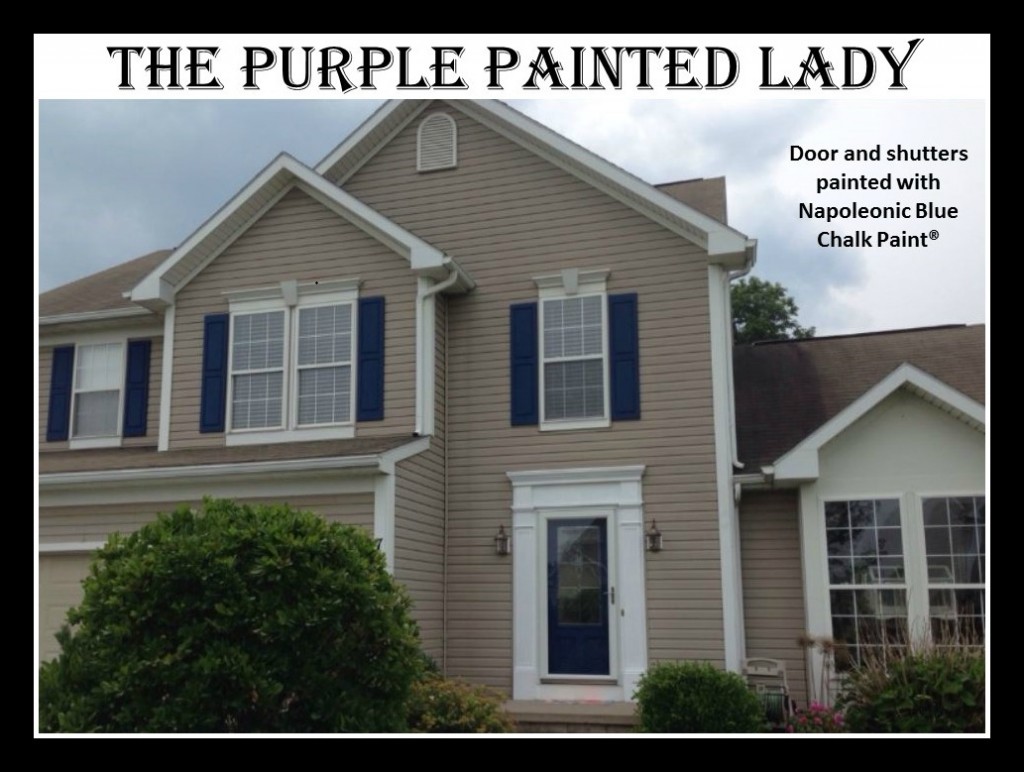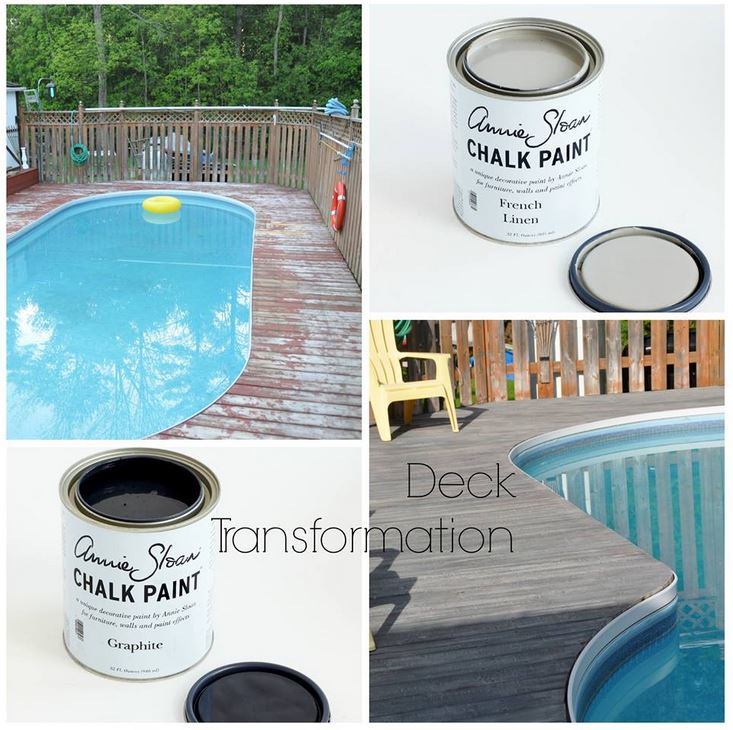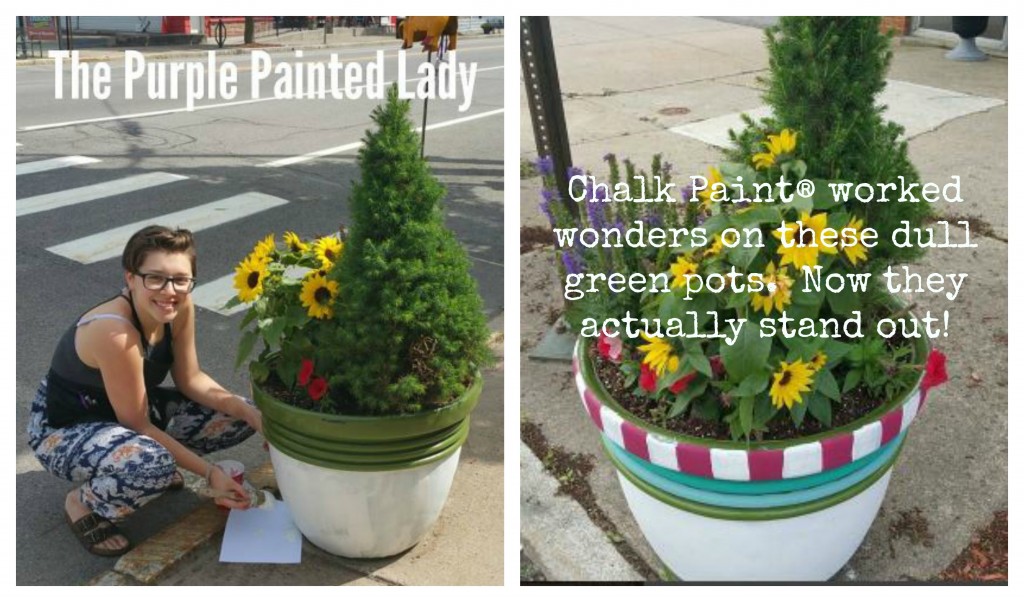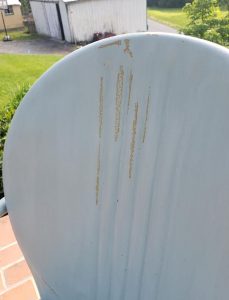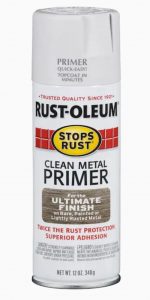Here is a topic you may not really think about – Kitchen Cabinets-(or wood panels) and the effects of dry winter air and also – the reverse- humidity over summer has on them. It is not a widespread issue, and in fact- most people will not have this problem~ but I want to address it and talk about how to avoid it.
Most importantly- keep in mind- that this issue that may happen during the winter months- will not be an issue once the warmer and more humid air returns.
Ok- on with my post:
First- when buying a classic 5 piece constructed cabinet door- if you can inquire if the wood used has been kiln dried- that should be your preference. The center panel of a classic 5 piece constructed cabinet door is designed to float and is not glued to the stiles or rails. This is to allow for normal shrinkage and expansion of the woods, and it also prevents the center panel from cracking. The amount of humidity in your home will influence shrinkage and expansion. So, let me just preface that depending on where you live in the world and the type of weather you experience ~ humidifiers and dehumidifiers in your home are important.
You may have seen a cabinet door where the paint may have cracked slightly.
Depending on where you live in the United States, during the winter months- the lack of 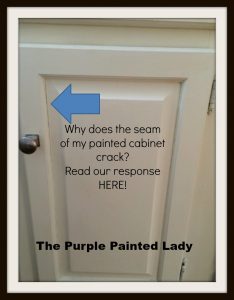 humidity – causing dry air is an issue. Hot, humid summers can be just as much of an issue too. (although I am fantasizing about warm weather at the moment since it is cold here in NY.)
humidity – causing dry air is an issue. Hot, humid summers can be just as much of an issue too. (although I am fantasizing about warm weather at the moment since it is cold here in NY.)
The winter weather – causes the dry winter air to leech moisture out of anything leaving your skin as dry and cracked as a salt flat and your sinuses as parched as the Sahara in summer.
The dry air also contributes to that jarring static shock that practically propels you across the room every time you pet the cat.
Having significant differences in humidity levels in your home through the four seasons, over time- will effect everything. In my old 1880’s home, when we bought the house back in 2003, it had one of those very old oil furnaces. The furnace looked like an octopus and was very inefficient. It also, did not have a humidifier. After we had it removed and installed a gas, high efficiency furnace that had a built in humidifier – my husband set the humidifier to 50%. This caused many things to improve. Our skin was not nearly as dry, I would no longer get shocked when I pet my dog. But the evidence of the years of dry air through winter, and sticky humid summers remained. One example of this is left visible in some of the wood doors. The closet door in my kitchen entrance in fact has a crack down the center of one panel where it bowed slightly due to humidity making it swell.
Some of the doors on the second level of the house- have these cracks too. The wood panels would expand and contract depending due to the level of humidity, and sometimes- that causes cracks over time. Think about it, in NY during the winter- humidity could be as low as 20%. In the summer, there are unbearable times we experience humidity that is 90% or higher. That expansion and contraction effects wood, and the paint on top of it.
So, the wood kitchen cabinets that are painted may show the signs of this situation. The paint is not the problem, but rather evidence that there is this issue.
Again- it is not totally the way you heat your home, but rather the lack of a humidifier- which puts moisture back into the dry winter air – which most of the newest gas furnaces do have.
This same issue can be the result of not having a dehumidifier over the hot, moist summer months.
I would recommend that you proactively manage this as best as possible. Consider getting a Relative Humidity Monitor and measure the level of humidity in your home. I think you can pick one up for $11 at any of the big box stores. There are more expensive ones, but our is just a basic elementary dial indicator and it works fine. It is important that you understand humidity levels should be kept at a reasonable rate (between 40 or 60%.)
This Old House, the television show and magazine has a great post where Norm explains why this happens….again the focus is that no moisture because of heat and winter weather is the culprit. Click HERE to read it.

Rose Wilde, another Annie Sloan stockist here in the United States advised, “One way to prevent this from happening is to score the paint and glaze along that line before and after the paint drys. This way you have the separation that will not be as much of an issue down the road.”
I read on-line from Thomas Richard at “TRS Designs” Pro;
“Your kitchen designer should be advising you of this fact, but he/she should not be discouraging you.
What they are describing is, in fact, quite normal and will occur on all cabinet lines from the least to the most expensive. Real wood, like most materials, will expand and contract with changes in humidity levels. Since cabinetry doors are comprised of multiple pieces of wood, with the grain running in different directions, these boards expand and contract at different rates. This movement is called humidification and can be quite extreme, depending on several factors, the major ones being your local climate and the actual HVAC system in your home. When you paint a real wood door, the paint hardens and then when the wood moves, the paint can develop visible lines or cracks at the seams of the cabinet doors. These ‘cracks’ may be more noticeable on “stile and rail’ type doors. Miter doorstyles will experience this too, but because the miter joint is usually more noticeable anyway, it tends to be easier to accept visually.
These ‘cracks’ are actually present on all cabinetry, but with stained cabinets, and their visible woodgrain, you just can’t see them as readily, but they are there. Just drag your fingernail across some cabinetry joints and you will find some.
If you really like the look of paint, but would like to virtually eliminate the ‘cracking’ you can either try to control the humidity levels in your house all year round, OR you could consider a cabinet door made from painted MDF (Medium Density Fiberboard). I personally prefer the strength and solidness of real wood, and I also accept that it is a living material, so the little cracks don’t bother me… In fact, they are proof that you have real wood cabinetry! Sorry if I ran on a little bit, but I wanted to try and be thorough.”
Another person recommended, “if you already have the cabinets your best solution is to sand the joints bare again and apply a very thin bead of painters caulk w/ silicone. It will shrink a little as it drys and should be barely noticeable once painted while still allowing for some minor expansion and contraction. It’s not an ideal situation, but it should be better then the cracked paint.”
The answer I received from Brandy Budzaj Siemens who is another stockist here in the USA and who owns Vintage Style and Designs was, “I was a kitchen designer prior to this. I always had a disclaimer in my contracts of solid wood painted cabinets, that is is LIKELY to happen. It’s the wood and Mother Nature. Solid wood moves. The paint (any) will crack. It should be less noticeable when the humidity comes back.”
Our Technical Director from our US Distributor wrote us, ”
It’s that time of year again in the colder regions of North America … “I’ve painted my kitchen cabinets and now the paint has cracked around the center panel.” It’s not the paint failing … it’s the wood moving. This is unavoidable in any solid wood cabinet … wood is a living, breathing thing designed to expand and contract at different rates with changes in humidty. A painted finish, no matter how good or how carefully applied, just can’t keep up. To minimize this effect and prevent any damage to the actual cabinet door, keep the following in mind:
– The center panel is designed to “float” within the rails and stiles … never seal this expansion joint with caulk as this can cause serious damage.
– Maintain a clean expansion joint while painting … paint the center panel first, and then start painting on the outer edges and work your way in to avoid any heavy buildup of paint … and clean out any excess paint with your brush.
So, there is a suggestion in itself- to leave it alone since if the cabinet has expanded- – we will soon be in a season where in is going to contract.”
I feel the most important part of this post I want to share with you is that dry air and then the opposite- being humidity take their toll on wood. Managing humidity levels in your home is important. Then this issue is no longer a problem.

